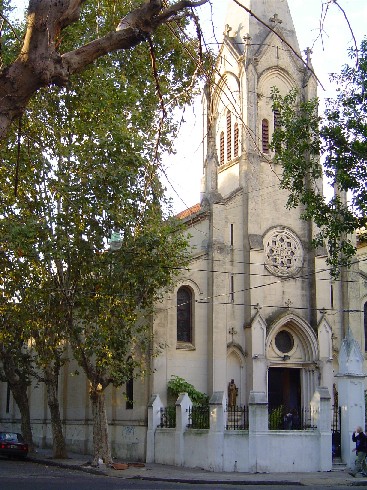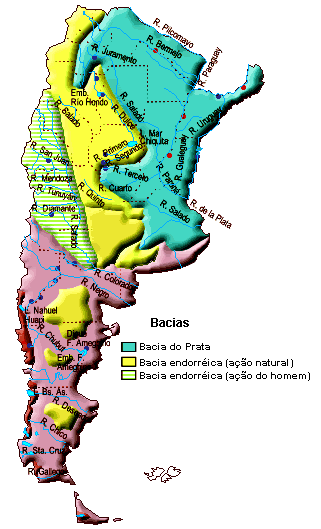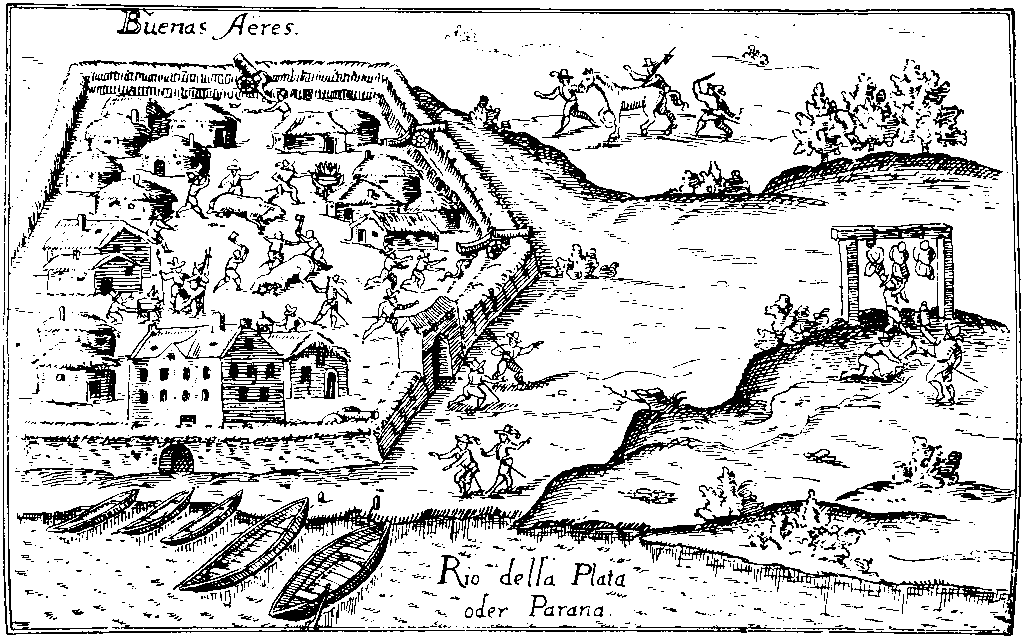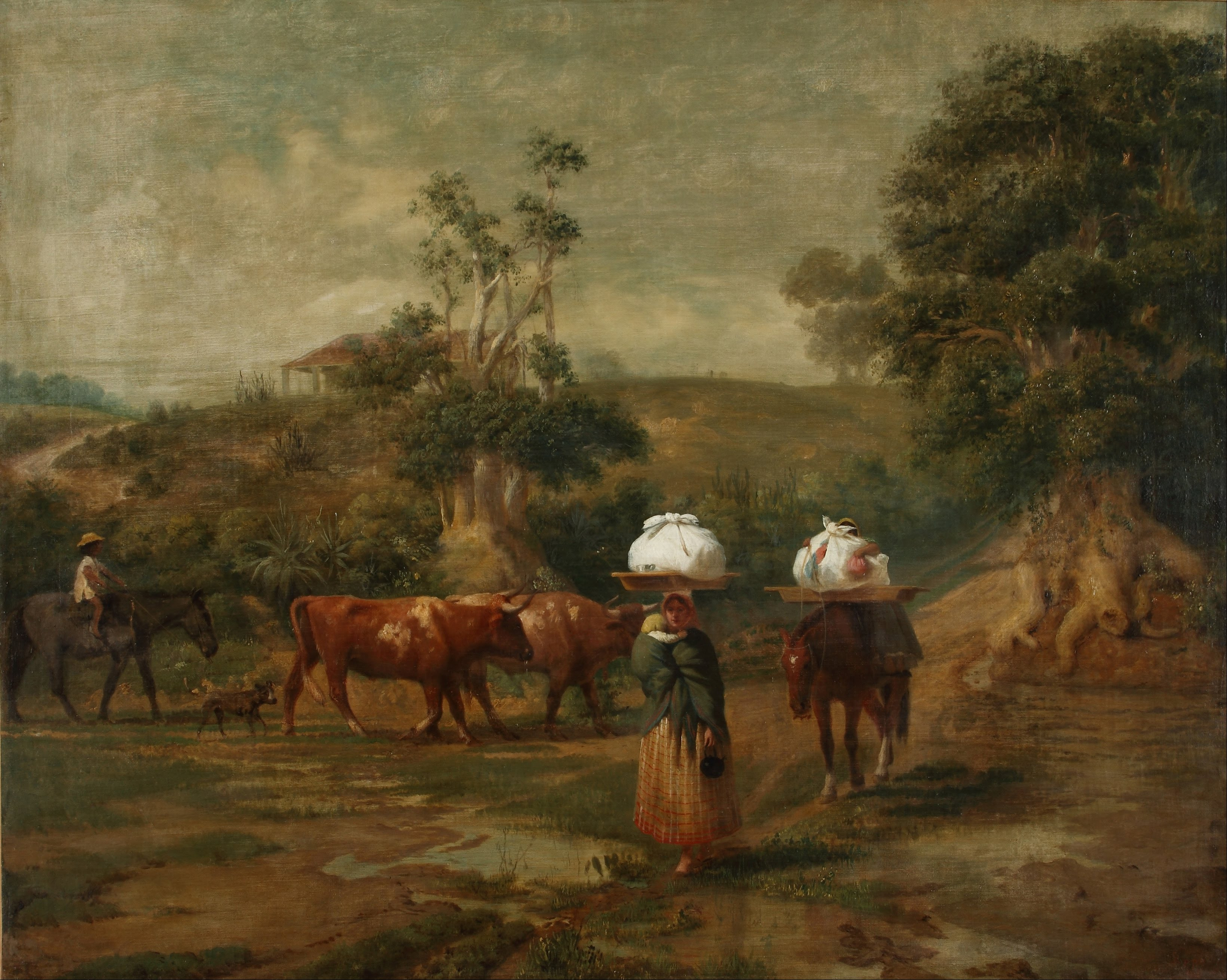|
Arroyo Maldonado
The Maldonado Stream (''Arroyo Maldonado'') is an underground storm sewer in the city Buenos Aires, Argentina, that runs below Juan B. Justo Avenue. Originally a stream draining into the Río de la Plata, its length goes through 10 of the 47 barrios of the city: Versalles, Liniers, Villa Luro, Vélez Sarsfield, Floresta, Villa Santa Rita, Villa Mitre, Caballito, Villa Crespo, and Palermo. The stream was one of the natural limits of the city, before the Belgrano and Flores neighborhoods were incorporated. It is named after the legend of , a woman who arrived with Pedro de Mendoza in 1536, and was abandoned in the plain, on the margins of the stream. The stream became a garbage dump in time, and during the rainy season became a polluted waterway made dangerous because of its overflows. The authorities decided via a municipal ordinance on August 25, 1924, to tube the stream as a final solution to all the problems that caused in a growing city, and in 1928 excavations started ... [...More Info...] [...Related Items...] OR: [Wikipedia] [Google] [Baidu] |
Arroyo Maldonado Entubado
Arroyo often refers to: * Arroyo (creek), an intermittently dry creek Arroyo may also refer to: People * Arroyo (surname) Places United States ;California * Arroyo Burro Beach, a public beach park in Santa Barbara County, California * Arroyo de la Laguna, a watercourse in the San Francisco Bay Area, California * Arroyo Grande, California, a city * Arroyo Mocho, a watercourse in Alameda County, California * Arroyo Valle, a stream in the Livermore Valley, California ;Pennsylvania * Arroyo, Pennsylvania ;Puerto Rico * Arroyo, Puerto Rico, a municipality ;Texas * Arroyo Alto, Texas, a neighborhood in the city of La Feria * Arroyo Gardens, Texas, a census-designated place ;West Virginia *Arroyo, West Virginia Spain * Arroyomolinos de León, a town and municipality in the province of Huelva Other * Restaurante Arroyo in Mexico City, the world's largest Mexican restaurant * Arroyo, a fictional village in the computer game ''Fallout 2'' * USS ''Arroyo'' (SP-197), a United States ... [...More Info...] [...Related Items...] OR: [Wikipedia] [Google] [Baidu] |
Villa Crespo
Villa Crespo is a middle class neighborhood in Buenos Aires, Argentina, located in the geographical center of the city. It had a population of 83,646 people in 2001, and thus currently a population density of 23,235 inhabitants/km2. Villa Crespo celebrates its anniversary on June 3. Villa Crespo was also sometimes referred to as Palermo Queens around 2007. This trade name, caused a reaction from the Neighborhood Association and Historical Studies at the Ombudsman of the city of Buenos Aires. They issued Resolution 2549/07, resulting in 14 realtors being sanctioned for publishing misleading advertising, in violation of the consumer competition law and fair trading law, and violation of the law of neighborhood boundaries and the tourist protection law. Palermo is considered a more expensive neighborhood and renaming Villa Crespo as part of Palermo would allow people to charge higher rents, etc. It grew around the "Fábrica Nacional de Calzado" (''National Shoe Factory'', 1888). The ... [...More Info...] [...Related Items...] OR: [Wikipedia] [Google] [Baidu] |
Rivers Of Buenos Aires
A river is a natural flowing watercourse, usually freshwater, flowing towards an ocean, sea, lake or another river. In some cases, a river flows into the ground and becomes dry at the end of its course without reaching another body of water. Small rivers can be referred to using names such as creek, brook, rivulet, and rill. There are no official definitions for the generic term river as applied to geographic features, although in some countries or communities a stream is defined by its size. Many names for small rivers are specific to geographic location; examples are "run" in some parts of the United States, "burn" in Scotland and northeast England, and "beck" in northern England. Sometimes a river is defined as being larger than a creek, but not always: the language is vague. Rivers are part of the water cycle. Water generally collects in a river from precipitation through a drainage basin from surface runoff and other sources such as groundwater recharge, springs, an ... [...More Info...] [...Related Items...] OR: [Wikipedia] [Google] [Baidu] |
Rivers Of Argentina
This is a list of rivers of Argentina. Longest Rivers By drainage basin This list is arranged by drainage basin, with respective tributaries indented under each larger stream's name. Rivers in the table above are in bold. La Plata Basin * Río de la Plata ** Uruguay River *** Gualeguaychú River *** Mocoretá River *** Miriñay River *** Aguapey River *** Pepiri-Guazu River ** Paraná River *** Arrecifes River *** Gualeguay River *** Nogoyá River *** Arroyo del Medio *** Saladillo Stream *** Ludueña Stream *** Carcarañá River **** Tercero River (Calamuchita River) **** Cuarto River (Saladillo River, Chocancharava River) *** Salado River (Salado del Norte, Juramento River, Pasaje River, Calchaquí River) **** Horcones River ***** Urueña River **** Arenales River **** Rosario River **** Guasamayo River *** San Javier River *** Feliciano River *** Guayquiraró River *** Corriente River *** Paraná Miní River **** Tapenagá River **** Palometa River *** Santa Lucía ... [...More Info...] [...Related Items...] OR: [Wikipedia] [Google] [Baidu] |
Aníbal Ibarra
Aníbal Ibarra (born March 1, 1958) is an Argentine lawyer and politician who served as mayor of Buenos Aires. Biography Ibarra was born in Lomas de Zamora, a district located in the southern region of Greater Buenos Aires. His father was a Paraguayan member of the PLRA who left his country during the dictatorship of Alfredo Stroessner. He enrolled at the Instituto Libre de Segunda Enseñanza, a public college preparatory school, and earned a law degree at the University of Buenos Aires. He worked as a prosecutor in the Judiciary, but resigned this job to participate in politics with as co-founder in 1990 of center-left party: the Frente Grande. His opposition to the pardons granted by President Carlos Menem to leaders of the 1976-83 dictatorship convicted in the 1985 Trial of the Juntas led to Ibarra's dismissal as prosecutor in 1991 by Solicitor General Oscar Roger. He was elected, however, to the Buenos Aires Deliberative Council that September, and in 1993 was named P ... [...More Info...] [...Related Items...] OR: [Wikipedia] [Google] [Baidu] |
Gravel
Gravel is a loose aggregation of rock fragments. Gravel occurs naturally throughout the world as a result of sedimentary and erosive geologic processes; it is also produced in large quantities commercially as crushed stone. Gravel is classified by particle size range and includes size classes from granule- to boulder-sized fragments. In the Udden-Wentworth scale gravel is categorized into granular gravel () and pebble gravel (). ISO 14688 grades gravels as fine, medium, and coarse, with ranges 2–6.3 mm to 20–63 mm. One cubic metre of gravel typically weighs about 1,800 kg (or a cubic yard weighs about 3,000 lb). Gravel is an important commercial product, with a number of applications. Almost half of all gravel production is used as aggregate for concrete. Much of the rest is used for road construction, either in the road base or as the road surface (with or without asphalt or other binders.) Naturally occurring porous gravel deposits have a ... [...More Info...] [...Related Items...] OR: [Wikipedia] [Google] [Baidu] |
Cement
A cement is a binder, a chemical substance used for construction that sets, hardens, and adheres to other materials to bind them together. Cement is seldom used on its own, but rather to bind sand and gravel ( aggregate) together. Cement mixed with fine aggregate produces mortar for masonry, or with sand and gravel, produces concrete. Concrete is the most widely used material in existence and is behind only water as the planet's most-consumed resource. Cements used in construction are usually inorganic, often lime or calcium silicate based, which can be characterized as hydraulic or the less common non-hydraulic, depending on the ability of the cement to set in the presence of water (see hydraulic and non-hydraulic lime plaster). Hydraulic cements (e.g., Portland cement) set and become adhesive through a chemical reaction between the dry ingredients and water. The chemical reaction results in mineral hydrates that are not very water-soluble and so are quite durable in wa ... [...More Info...] [...Related Items...] OR: [Wikipedia] [Google] [Baidu] |
Rebar
Rebar (short for reinforcing bar), known when massed as reinforcing steel or reinforcement steel, is a steel bar used as a Tension (physics), tension device in reinforced concrete and reinforced masonry structures to strengthen and aid the concrete under tension. Concrete is strong under Compression (physics), compression, but has weak tensile strength. Rebar significantly increases the tensile strength of the structure. Rebar's surface features a continuous series of ribs, lugs or indentations to promote a better bond with the concrete and reduce the risk of slippage. The most common type of rebar is carbon steel, typically consisting of hot-rolled round bars with deformation patterns embossed into its surface. Steel and concrete have similar coefficient of thermal expansion, coefficients of thermal expansion, so a concrete structural member reinforced with steel will experience minimal differential stress (mechanics), stress as the temperature changes. Other readily available ... [...More Info...] [...Related Items...] OR: [Wikipedia] [Google] [Baidu] |
Siemens-Schuckert
Siemens-Schuckert (or Siemens-Schuckertwerke) was a German electrical engineering company headquartered in Berlin, Erlangen and Nuremberg that was incorporated into the Siemens AG in 1966. Siemens Schuckert was founded in 1903 when Siemens & Halske acquired Schuckertwerke. Subsequently, Siemens & Halske specialized in communications engineering and Siemens-Schuckert in power engineering and pneumatic instrumentation. During World War I Siemens-Schuckert also produced aircraft. It took over manufacturing of the renowned Protos vehicles in 1908. In World War II, the company had a factory producing aircraft and other parts at Monowitz near Auschwitz. There was a workers camp near the factory known as Bobrek concentration camp. The Siemens Schuckert logo consisted of an S with a smaller S superimposed on the middle with the smaller S rotated left by 45 degrees.Siemens used this as a theme for their logos with absorbed companies: Siemens & Halske's logo was a large S with a small sup ... [...More Info...] [...Related Items...] OR: [Wikipedia] [Google] [Baidu] |
Pedro De Mendoza
Pedro de Mendoza () (c. 1499 – June 23, 1537) was a Spanish ''conquistador'', soldier and explorer, and the first ''adelantado'' of New Andalusia. Setting sail Pedro de Mendoza was born in Guadix, Grenada, part of a large noble family that was preeminent in Spain. His family settled in Guadix after its reconquest by the Christians in 1489. He was a page at the Spanish court of Emperor Charles V and accompanied the sovereign on his trip to England. In 1524 he received the title of knight of the Order of Alcántara and later, through the influence of his father — the knight Fernando de Mendoza Guadix — entered the Order of Santiago. He later fought in the Italian Wars against the French, in which he participated in the Sack of Rome in 1527. In 1529, he offered to explore South America at his own expense and establish colonies. Thanks to the efforts of his mother María de Mendoza, in 1534 his offer was accepted: he was made ''adelantado'' governor, captain general, an ... [...More Info...] [...Related Items...] OR: [Wikipedia] [Google] [Baidu] |
Flores, Buenos Aires
Flores is a middle-class ''barrio'' or district in the center part of Buenos Aires city, Argentina. Flores was considered a rural area of the Province of Buenos Aires until 1888 when it was integrated into the city. Flores is the birthplace of Pope Francis. Limits The limits of the neighborhood are marked by several streets and avenues: Portela, Cuenca, Av. Gaona, Av. Donato Álvarez, Curapaligüe, Av. Directorio, Av. Carabobo, Av. Castañares, Torres y Tenorio, Av. Riestra, Av. Perito Moreno, Av. Castañares, Lacarra, and Av. Luis J. Dellepiane. History Flores was mainly composed of country houses from the wealthy people of the City of Buenos Aires. Today, remains of those houses can still be found, including the house owned by Juan Manuel de Rosas, the Governor of the Province around the 19th century. One of the most prominent of these early homeowners in Flores was the Marcó del Pont family, descendants of a former Spanish governor of Chile. Purchasing property facing t ... [...More Info...] [...Related Items...] OR: [Wikipedia] [Google] [Baidu] |
Belgrano, Buenos Aires
Belgrano is a northern and leafy '' barrio'' or neighborhood of Buenos Aires, Argentina. Location The barrio of Palermo is to the southeast; Núñez is to the northwest; Coghlan, Villa Urquiza, Villa Ortúzar and Colegiales are to the southwest. History Belgrano was named after Manuel Belgrano, a politician and military leader who created the national flag of Argentina. In 1820, at Belgrano's death, Buenos Aires' legislature introduced a law to name the next town to be founded after him. This happened in 1855, when the Buenos Aires government, fearful that relatives of Juan Manuel de Rosas would dispute the governmental decision to expropriate Rosas' lands, laid down a new town on part of it and named it Belgrano. The town was declared a city shortly thereafter, due to its booming growth, and in 1880 it became the nation's capital for a few weeks, because of the dispute between the national government and Buenos Aires province for the status of the city of Buenos Aires ... [...More Info...] [...Related Items...] OR: [Wikipedia] [Google] [Baidu] |








